Heinz Mehlhorn, Heinz Mehlhorn9783540489948, 3540489940
The third edition of the Encyclopedia of Parasitology contributes to these goals in several ways: the number of entries has been increased by about 30%, the content has been even more improved by adding more tables and figures. The extensive linking between definitions and essays facilitates information within a minimum of time.
More than 40 international contributors, who are well known specialists in their fields, give a comprehensive review of all parasites and therapeutic strategies in veterinarian and human parasitology.
The third edition is now presented as two volumes in A-Z format and additionally in an electronic online version.
Table of contents :
Cover……Page 1
Preface to the First Edition……Page 6
Preface to the Third Edition……Page 7
Acknowledgements……Page 8
Main Topics and Contributors……Page 9
List of Contributors……Page 11
Introduction……Page 15
Mode of Action……Page 340
Epizootiology and Enzootic Stability of BovineBabesiasis……Page 162
Babesians……Page 171
Dogs……Page 172
General Information……Page 173
Bacteria……Page 174
Balantidiasis, Man……Page 175
Tick Control in Livestock to Prevent Babesiosis……Page 165
Escape and Defence Behavior……Page 181
Control of Babesiosis by Various Application Techniques of Acaricides……Page 168
Chemotherapy of Babesiosis in Animals……Page 169
Measures to Eliminate Parasites that have BecomeEstablished……Page 182
Resistance……Page 170
General Aspects……Page 183
Female’s Choice……Page 184
Parasite Mating Behaviors……Page 185
Molecular Interactions……Page 393
Balantidosis, Animals……Page 176
Basis capituli……Page 177
General Information……Page 178
Molecular Interactions……Page 394
Alterations of Host’s Behavior Faciliating Parasite Transmission……Page 179
Resistance……Page 395
Synonyms……Page 396
Clinical Relevance……Page 398
Benign Theileriosis……Page 186
Disease……Page 187
Mode of Action……Page 188
General Information……Page 189
General Information……Page 192
Life Cycle……Page 194
Blepharoprosthium……Page 196
General Information……Page 197
Borrelia……Page 198
Borrelia burgdorferi……Page 199
Boutonneuse Fever……Page 200
Resistance……Page 399
Morphology……Page 190
Life Cycle……Page 191
Resistance……Page 400
Pathology……Page 193
Braula……Page 201
Brugia……Page 202
Budd‐Chiari‐Syndrome……Page 203
Synonyms……Page 204
Bullis Fever……Page 205
Buxtonella……Page 206
Immunization……Page 384
Important Compounds……Page 401
Synonyms……Page 840
Disease Control, Planning……Page 385
M.I.F.C…….Page 846
General Information……Page 386
Dixenous Development……Page 387
Resistance……Page 388
General Information……Page 847
Mitochondria……Page 857
Molluscicides……Page 859
Monocercus ruminantium……Page 860
Synonyms……Page 390
Molecular Interactions……Page 391
General Information……Page 862
Monophyletic Situation……Page 863
Synonym……Page 864
Mucocutaneous Leishmaniasis……Page 870
Murine Spotted Fever……Page 871
Clinical Relevance……Page 405
Synonyms……Page 406
Important Compounds……Page 407
Characteristics……Page 408
Important Compounds……Page 411
Targets for Intervention……Page 412
Muscidosis……Page 872
Draschia……Page 413
Myiasis, General……Page 874
Myiasis, Man……Page 875
Life Cycle……Page 876
Efficacy……Page 415
Market Costs and Suitability for Developing Country Use……Page 416
Humans……Page 417
System……Page 878
Myzostomida……Page 879
Propenidazole……Page 1212
Clinical Relevance……Page 418
Molecular Interactions……Page 419
Protandry……Page 1213
Clinical Relevance……Page 420
Clinical Relevance……Page 421
Molecular Interactions……Page 1221
Proteinases……Page 1215
Clinical Relevance……Page 1216
General Information……Page 1222
Classification……Page 1223
Prowazek, Stanislaus von (1875–1915)……Page 1225
Name……Page 1229
Synonyms……Page 402
Psoroptic Mange……Page 1231
General Information……Page 1232
Pyrimidines……Page 1236
Chemical Class……Page 1237
Pyruvate Dehydrogenase……Page 1238
Trypanorhyncha……Page 1522
Fine Structure……Page 1526
Przhevalskiana……Page 1226
Pseudolynchia canariensis……Page 1228
Host Cell Invasion……Page 1529
Trypanosoma Genome……Page 1530
Therapy……Page 1532
Purines……Page 1233
Pyemotes……Page 1235
Therapy……Page 1533
Caligus……Page 212
Camallanus……Page 213
Capillaria aerophila……Page 214
Capping……Page 215
Heart……Page 217
Vasculitis……Page 218
Arteries……Page 219
Therapy……Page 221
Catecholamines……Page 222
Cell……Page 224
Binary Fission……Page 225
Multiple Divisions……Page 228
Cement Glands……Page 230
Cephalobaenidae……Page 231
Cephalothorax……Page 232
Mating……Page 233
Daily Activity……Page 234
Cercopithifilaria……Page 235
Immune Responses……Page 236
General Information……Page 237
System……Page 239
Integument……Page 240
Economic Importance and Epizootiology……Page 241
Old Remedies and Modern Compounds with Cestocidal Activity……Page 252
Drugs Acting on Adult and Larval Tapeworm Infection of Sheep and Cattle……Page 253
Drugs Acting on Adult and Larval Tapeworm Infections of Humans……Page 254
Chabertia……Page 255
Pathology……Page 256
T Cells……Page 257
Vaccination……Page 258
Charcot-Leyden Crystals……Page 259
Withdrawal Time of Drugs in Target Animals……Page 260
Critical Use of Drugs in Concert with Other ControlMeasures……Page 261
Cheyletiella Species……Page 262
Chitin……Page 263
Cholecystitis……Page 264
Protozoa……Page 265
Metazoa……Page 266
Chrysomia bezziana……Page 267
Important Species……Page 268
Synonym……Page 269
Cirripedia……Page 270
Old System……Page 271
New System……Page 272
New (Simplified, Selective) System ofProtozoans(–2007)……Page 273
General Information……Page 276
Production Losses……Page 278
Life Cycle and Geographical Distribution……Page 279
Coated Pits……Page 280
Diseases……Page 281
Epizootiology and Control Measures……Page 288
Coccidiosis in the Domestic Fowl……Page 298
Action of Drugs on Developmental Stages ofEimeria spp…….Page 299
Drugs Acting on Coccidiosis of Turkeys, Geese, Ducks, and Gamebirds……Page 300
Drugs Acting on Coccidiosis (Eimeriosis) of Ruminants and Horses……Page 301
Drug Tolerance Problems in the Broiler Industry……Page 302
Drugs Acting on Cryptosporidiosis in Birds……Page 304
Sheep and Goats……Page 305
Immunity and Vaccination……Page 306
Cochliomyia hominis……Page 307
Coenurosis, Man……Page 308
Colonisation……Page 309
Competition, Interspecific……Page 310
Competition, Intraspecific……Page 311
Connatal Toxoplasmosis……Page 312
Control……Page 313
Copra’s Itch……Page 314
Costa……Page 315
Crenosoma striatum……Page 316
Crithidia fasciculata……Page 317
General Information……Page 318
Cryptobia……Page 319
Immune Responses……Page 320
T Cells……Page 321
Classification……Page 322
Disease……Page 323
Ctenophthalmus agyrtes……Page 325
Culiseta……Page 326
Cutaneous Leishmaniasis……Page 327
Cyclops……Page 328
Cylicodontophorus……Page 329
Cyst Wall……Page 330
Cystacanth……Page 333
B Cells and Antibodies……Page 335
Name……Page 336
Cytauxzoon felis……Page 337
Cytoplasmic Inclusions……Page 338
Cytostome……Page 339
Mode of Action……Page 341
Dense Bodies……Page 342
Synonym……Page 343
Name……Page 344
Desmodus rotundus……Page 345
Diaptomus……Page 346
Classification……Page 347
Dientamoeba fragilis……Page 348
Life Cycle……Page 351
Reproduction……Page 354
Miracidia……Page 355
Cercariae……Page 363
Mode of Action……Page 367
Therapy……Page 368
Diphyllobothriasis, Man……Page 369
Diplopylidium……Page 370
General Information……Page 371
Life Cycle……Page 372
Other Species……Page 375
Disease Control, Evaluation……Page 376
Water Supplies……Page 381
Environmental Management……Page 382
Control of Vectors and Intermediate Hosts……Page 383
Molecular Interactions……Page 410
Drug Discovery……Page 414
Dyskinetoplastic Stage……Page 422
General Information……Page 424
Echidnophaga gallinacea……Page 425
Echinococciasis……Page 426
B Cells and Antibodies……Page 427
T Cells……Page 428
Echinococcus vogeli……Page 429
Echinolepis carioca……Page 431
Echinostomiasis, Man……Page 433
Eclosion……Page 434
Ecosystems and Parasitism……Page 435
Mode of Action……Page 436
General Information……Page 437
General Information……Page 438
Resistance……Page 439
General Information……Page 441
General Information……Page 442
General Information……Page 443
Resistance……Page 444
Resistance……Page 445
General Information……Page 446
Resistance……Page 448
General Information……Page 449
Resistance……Page 450
General Information……Page 451
General Information……Page 454
Type II Pyrethroids……Page 455
Important Compounds……Page 456
Resistance……Page 457
General Information……Page 459
General Information……Page 460
General Information……Page 461
Ehrlich, Paul (1854–1915)……Page 462
Eimeriosis……Page 463
Elephantiasis tropica……Page 466
Disease……Page 467
Endocytosis……Page 468
Endoplasmatic Reticulum……Page 471
General Information……Page 479
Adaptations……Page 480
Kinetoplastid Flagellates……Page 481
Anaerobic Protozoa……Page 484
Apicomplexans……Page 486
Adult Helminths……Page 487
Free‐Living and Larval Stages of Helminths……Page 490
General Information……Page 492
Molecular Interactions……Page 493
Molecular Interactions……Page 494
Resistance……Page 496
Molecular Interactions……Page 498
Resistance……Page 499
Isothiocyanates……Page 500
Halogenated Bisphenols……Page 501
Salicylanilides……Page 502
Disease……Page 503
Pathology……Page 505
Classification……Page 506
Enteromyiasis……Page 508
Environmental Management……Page 509
Eosinophilia……Page 510
Epidermal Growth Factor (EGF)……Page 511
Eridication……Page 512
Chemical Class……Page 513
Synonym……Page 514
Eukaryota……Page 518
Eurytrema……Page 519
Evasion Mechanisms……Page 520
Exposition……Page 521
Extrinsic Incubation Period (EIP)……Page 522
Eye Parasites……Page 523
Eye Worm……Page 527
Fannia……Page 528
Name……Page 529
Targets for Intervention……Page 530
Distribution……Page 531
General Information……Page 532
Favorisation……Page 533
Febantel……Page 535
Mode of Action……Page 536
Pathology……Page 537
B Cells and Antibodies……Page 538
Planning of Control……Page 539
Targets for Intervention……Page 540
Filaroides (Oslerus) osleri……Page 541
Flagella……Page 542
Synonym……Page 546
Flea Allergy Dermatitis (FAD)……Page 547
Morphology……Page 550
Reproduction……Page 551
Life Cycle……Page 552
Interaction of Vector and Parasite……Page 554
Control……Page 555
Synonym……Page 556
Fortification……Page 557
Furcocercous Cercariae……Page 558
Gametes – Protozoa……Page 560
Trematodes……Page 563
Gamogony……Page 564
Important Species……Page 565
Gastrodiscus aegyptiacus……Page 566
Physiological Function……Page 567
Clinical Relevance……Page 568
Pathology……Page 569
Genital System Diseases, Animals……Page 570
Geographic Distribution……Page 572
Geographic Zones of Occurrence of Diseases……Page 573
Disease……Page 574
Pathology……Page 575
Pathology……Page 576
Immunopathology……Page 578
Glaridacris catostomi……Page 579
General Information……Page 580
Pathology……Page 581
Glycogen……Page 582
Glycosylphosphatidylinositols……Page 583
Golgi Apparatus……Page 585
Golgi‐Less‐Secretory‐System……Page 586
Synonym……Page 587
System……Page 588
Grooming Behavior……Page 589
Gubernaculum……Page 591
Classification……Page 592
Classification……Page 593
Gyrostigma……Page 594
Name……Page 596
Therapy……Page 597
Haemonchosis……Page 598
Haemonchus contortus……Page 599
Haemosporidia……Page 600
Haller’s Organ……Page 601
Hamilton and Zuk Hypothesis……Page 602
Chemotherapy……Page 603
Hardy-Weinberg Equilibrium……Page 604
Heartworm Disease……Page 605
Helminthic Infections, Pathologic Reactions……Page 606
Synonyms……Page 607
Molecular Interactions……Page 608
Molecular Interactions……Page 610
Clinical Relevance……Page 611
Resistance……Page 614
Resistance……Page 615
Hepatitis interstitialis parasitaria multiplex……Page 616
Chemical Class……Page 617
Hermetia illucens……Page 619
Hexachlorcyclohexan……Page 620
Therapy……Page 622
Symptoms……Page 623
Histiocytic Reactions……Page 624
HIV-Interactions……Page 625
Hoferellus cyprini……Page 626
Holarktikos crassiceps……Page 627
Holometabolous Development……Page 628
Pathology……Page 632
Targets for Intervention……Page 633
General Information……Page 634
General Information……Page 636
Host Demography……Page 637
Manipulation Mechanisms……Page 638
Host-Parasite Interface, Protozoa……Page 639
Human Botfly……Page 640
General Information……Page 641
Hydrotaea……Page 642
Targets for Intervention……Page 643
Name……Page 644
General Information……Page 645
Hypoderma……Page 647
Hypoderma lineatus……Page 648
Hypopus……Page 649
Hypoxia……Page 650
Hystrichis tricolor……Page 651
Name……Page 652
IFAT……Page 653
IHAT……Page 654
Innate Immunity……Page 655
Antigen Presentation……Page 656
T-Cell Mediated Responses……Page 657
General Information……Page 658
Clinical Relevance……Page 659
Immunosuppression……Page 660
Inhibitors of the Electron TransportChain……Page 661
Clinical Relevance……Page 662
Molecular Interactions……Page 663
Molecular Interactions……Page 665
Clinical Relevance……Page 668
Molecular Interactions……Page 669
General Information……Page 670
Reproductive Organs……Page 671
Gametogenesis and Fertilization……Page 672
Integument……Page 673
Intestine and Food Uptake……Page 674
Synonym……Page 679
Irondeficiency Anemia……Page 680
Isospora belli……Page 681
Isosporosis, Man……Page 682
Synonym……Page 683
Disease……Page 684
Classification……Page 685
Ixodiphagus……Page 686
General Information……Page 694
Implications……Page 695
Keratitis of Eye……Page 696
Kinete……Page 698
Kinetoplast DNA……Page 699
Host Cell Recognition……Page 702
Morphology……Page 703
Feeding Behavior and Transmission of Disease……Page 704
Kleine, Friedrich‐Karl (1869–1951)……Page 705
Knock-Down Effect……Page 706
Koch, Robert (1843–1910)……Page 707
Kwashiorkor Malaria……Page 708
General Information……Page 709
Lamblia……Page 710
Lasiohelea……Page 711
Synonym……Page 712
Intestine and Food Uptake……Page 713
Classification……Page 715
Host Cell Invasion……Page 716
General Information……Page 718
Drugs Acting on Leishmaniases of Humans andAnimals……Page 720
Pathology……Page 721
Cutaneous Leishmaniasis (CL)……Page 722
Visceral Leishmaniasis (VL)……Page 723
Innate Defense Mechanisms……Page 725
T Cells and Cytokines……Page 726
Evasion Mechanisms of Leishmania……Page 728
Vaccination……Page 729
Lemniscus……Page 730
Leptoconops……Page 731
Disease……Page 732
General Information……Page 734
Life Cycle……Page 735
Reproduction……Page 736
Feeding Behavior and Transmission of Disease……Page 737
Name……Page 738
Linognathus setosus……Page 739
Lipids……Page 741
Lipocystis polyspora……Page 743
General Information……Page 744
Livoneca symmetrica……Page 745
Lobopodia……Page 746
Löffler, Friedrich (1852–1915)……Page 747
Looss, Arthur……Page 749
Disease……Page 750
Therapy……Page 752
Lysosomes……Page 753
Macrobilharzia……Page 756
Major Sperm Protein……Page 757
Immune Responses……Page 759
T Cells……Page 760
Evasion Mechanisms……Page 762
Preerythrocyte Stages Vaccines (Sporozoite and Hepatic Stage Vaccines)……Page 763
Asexual Blood Stage Vaccines……Page 764
Planning of Control……Page 765
Targets for Intervention……Page 768
Malaria Containment……Page 770
Malaria of Birds, Rodents, and Monkeys……Page 771
Biology……Page 780
Global Control Programs……Page 781
Antimalarial Drug Development……Page 788
Mallophagidosis……Page 789
Malnutrion……Page 790
Trombiculidiasis……Page 792
Mansonella……Page 794
Mansonia……Page 795
Martini, Erich (1880–1960)……Page 797
Mathematical Models of Vector-Borne Diseases……Page 798
Vocabulary of Mathematical Modeling……Page 799
Systems of Differential Equations……Page 800
The SEIR Model……Page 801
An Intuitive Explanation of Rates of Entering orLeavingStates……Page 802
Indirectly Transmitted Diseases – Vectors……Page 803
The Malaria Parasite’s Guide to the Mosquito–HumanCycle……Page 804
The Ross Malaria Model……Page 805
Observing Infection Dynamics and the EffectsofInterventions……Page 809
Vectorial Capacity……Page 812
A Model for Eastern Equine Encephalitis……Page 813
Mefloquine……Page 814
Synonyms……Page 815
Synonyms……Page 816
Molecular Interactions……Page 817
Clinical Relevance……Page 818
Clinical Relevance……Page 819
Molecular Interactions……Page 820
Resistance……Page 821
Mepacrine……Page 822
General Information……Page 823
Mesostigmata……Page 826
Metacercariae……Page 827
Metaphylaxis……Page 828
Metastasis‐Like Propagation……Page 829
Integument……Page 830
Therapy……Page 831
Microgametes……Page 832
Micropores……Page 834
African Trypanosomiasis……Page 835
General Information……Page 836
Host Cell Invasion……Page 837
Clinical Relevance……Page 841
Molecular Interactions……Page 842
Life Cycle……Page 848
Ontogeny……Page 849
Intestine and Food Uptake……Page 853
Excretory System……Page 856
Morphology……Page 865
Genetics……Page 866
Interaction of Vector and Parasite……Page 867
Host Finding……Page 868
Oriented Flight……Page 869
Naegleriasis……Page 880
Therapy……Page 881
Nariz de Anta……Page 882
Necator americanus……Page 883
Phenothiazine and Piperazines……Page 884
Levamisole, Pyrantel, Morantel……Page 885
Avermectins and Milbemycins……Page 908
Narrow-Spectrum Drugs Effective Against Drug-Resistant Nematodes……Page 936
Chemoprophylaxis and Effects on Protective Immunity Against Nematodes and Lungworms……Page 937
Gastrointestinal Nematode Infections of Cattle, Sheep, and Goats, Timing of Strategic Drug Treatments, and Biological Control……Page 938
Assays for Detection of Resistance to Anthelmintics……Page 940
Maximum Residue Limits (MRLs) and Withdrawal TimeBefore Slaughter……Page 941
Epizootiology and Characteristics of Various NematodeInfections……Page 942
Epizootiological-Based Control Programs Against Development of Anthelmintic Resistance……Page 943
Drugs in Current Use Against Nematode InfectionsinHorses……Page 944
Economic Importance and Disease Patterns of Nematode Infections in Swine……Page 945
Control Measures and Drugs in Current Use Against Nematode Infections in Swine (for drugs cf.Table4)……Page 946
Nematode Infections of Dogs and Cats……Page 947
Prevention and Treatment of Canine and Feline Nematode Infections……Page 948
Chemotherapy and Chemoprophylaxis of Dirofilariasis of Dogs (cf. Table 5)……Page 949
Dictyocaulus Infections……Page 950
Protostrongylid Infections of Small Ruminants……Page 951
Gastrointestinal (GI) Nematodes of Medicinal Importance……Page 952
Cutaneous/Visceral Larva Migrans Syndrome, Trichinosis, and Dracunculiasis……Page 966
Filarial Nematodes of Medicinal Importance……Page 967
Nippostrongylus brasiliensis……Page 968
General Information……Page 969
System……Page 973
Reproductive Organs……Page 974
Gametogenesis……Page 977
Eggshell Formation……Page 978
Cuticle……Page 979
Hypodermis (=Epidermis)……Page 986
Intestine and Food Uptake……Page 990
Excretory System……Page 995
Host Finding……Page 996
Nematodirosis……Page 1002
Nematospiroides dubius……Page 1003
General Information……Page 1004
Classification……Page 1005
Neotropical Cutaneous Leishmaniasis (NCL)……Page 1007
Nephridiorhynchus Major……Page 1008
Nervous System Diseases, Animals……Page 1009
Protozoa……Page 1010
Nematodes……Page 1011
Nematodes……Page 1013
Protozoa……Page 1014
Nematodes……Page 1016
Brain……Page 1017
Innervation of Pharynx and Stomatogastric Systems……Page 1019
Neuronal Mapping and Co-localisation ofNeuroactive Substances……Page 1020
Neurocytology and Ultrastructure……Page 1022
Synapses……Page 1023
Neuronal Messengers……Page 1024
Innervation of the Reproductive System……Page 1028
Neuroactive Substances and Development……Page 1030
Fosmidomycin (C4H9NPO5–Na+)……Page 1031
Triclosan (C12H7O2Cl3)……Page 1032
Imiquimod (C14H15N4)……Page 1033
8‐Aminoquinolines……Page 1034
Nitazoxanide (C12H9N3O5S)……Page 1035
Miltefosine (C21H46NPO4)……Page 1036
Chemical Class……Page 1037
Nocht, Bernhard (1857–1945)……Page 1038
No‐see‐ums……Page 1039
Disease……Page 1040
Nosopsyllus fasciatus……Page 1041
General information……Page 1042
Nuclear Division……Page 1043
Protozoa……Page 1045
Helminths……Page 1047
Nutall, Georg Henry Falkimer (1862–1937)……Page 1049
General Information……Page 1050
Amino Acids……Page 1052
Helminths……Page 1053
Nymph……Page 1055
Nymphomania……Page 1056
Oedema……Page 1058
General Information……Page 1059
Oestrosis……Page 1060
OLM……Page 1061
Ommatidium……Page 1062
Pathology……Page 1063
Onchocerciasis‐Related Epilepsy……Page 1066
Oogenotop……Page 1067
System……Page 1068
Operculum……Page 1069
Opisthorchiasis, Man……Page 1070
Distribution……Page 1071
Synonym……Page 1072
Orientation……Page 1073
Synonym……Page 1074
Orthomitosis……Page 1075
Ostertagiosis……Page 1076
Outdoor Feeding……Page 1077
Ovoid Mitochondrial Cytoplasmic Complex (OMC)……Page 1078
Synonym……Page 1079
Therapy……Page 1080
Papula……Page 1082
Paragonimiasis, Man……Page 1083
Paragonimus kellicotti……Page 1084
Paralysis……Page 1085
Paramphistomosis……Page 1086
Disease……Page 1087
Therapy……Page 1088
Parasitiformes……Page 1089
Parbendazole……Page 1090
Prepatency……Page 1091
Pathogenesis……Page 1093
Pathology……Page 1094
Therapy……Page 1125
General Information……Page 1126
Pedipalps……Page 1127
Pellicle……Page 1128
Classification……Page 1133
General Information……Page 1134
System……Page 1136
Musculature……Page 1138
Reproductive Organs……Page 1139
Postzygotic Development……Page 1140
Intestine and Food Uptake……Page 1142
Peristome……Page 1143
Peritrophic Membranes……Page 1144
Synonym……Page 1145
Phagosomes……Page 1146
Mode of Action……Page 1147
Therapy……Page 1148
Phocanema sp…….Page 1149
Phylogenetic Reminiscence……Page 1150
General Information……Page 1151
Gene Sequence Alignment……Page 1152
Methods……Page 1153
Ribosomal RNA Genes……Page 1154
Host-Parasite Cospeciation……Page 1155
Pian‐Bois……Page 1156
Classification……Page 1157
Plasmodium……Page 1158
Plastron……Page 1164
Reproductive Organs……Page 1165
Gametogenesis……Page 1167
Asexual Processes……Page 1170
Integument……Page 1173
Musculature……Page 1177
Intestine and Food Uptake……Page 1179
Nervous System……Page 1181
Plesiomorphic Character……Page 1185
Classification……Page 1189
Trophic Forms……Page 1190
Spores and Spore Cases (Cystic Forms)……Page 1192
Biochemical Data……Page 1193
Disease……Page 1194
Pathology……Page 1195
Immune Responses……Page 1196
Diagnostics……Page 1197
Therapy……Page 1198
Therapy……Page 1200
Polyamines……Page 1201
Polyplax serrata……Page 1202
General Information……Page 1203
Protein-Based Methods……Page 1205
Sequencing……Page 1206
Populations……Page 1207
Postkala‐azar (PKDL)……Page 1208
Prevalence……Page 1210
Procyclin……Page 1211
Molecular Interactions……Page 1217
Synonyms……Page 1218
Clinical Relevance……Page 1219
Molecular Interactions……Page 1220
Quinacrine……Page 1240
Quinones……Page 1241
Quinone‐Tanning……Page 1242
Radiology……Page 1244
Rectal Prolaps……Page 1245
Red Queen Hypothesis……Page 1247
Regulation……Page 1248
Renette……Page 1249
Reserve Granules……Page 1250
Resistance Encoding Genes……Page 1254
Manifestations and Pathophysiology……Page 1255
Treatment……Page 1256
Nematodes……Page 1257
Lungworms……Page 1260
Name……Page 1262
Rhabdochona denudata……Page 1263
General Information……Page 1264
Rhinobothrium……Page 1265
Rhizopoda……Page 1266
Rhoptries……Page 1267
Ribosomes……Page 1268
Rickettsiae……Page 1269
RNA Editing……Page 1270
Rochalimea……Page 1271
Romana Sign……Page 1272
Mode of Action……Page 1273
Synonym……Page 1274
SALSA……Page 1276
Life Cycle……Page 1277
Saprophagy……Page 1278
Disease……Page 1279
Name……Page 1283
Name……Page 1284
Sarcoptic Mange……Page 1285
Sarcosporidiosis, Animals……Page 1286
Muscle……Page 1290
SBP‐1……Page 1291
Synonym……Page 1292
Classification……Page 1294
Integument/Surface Coat……Page 1295
Schistosome Genome……Page 1299
Therapy……Page 1300
Dermatitis……Page 1301
Acute Schistosomiasis……Page 1302
Eggs……Page 1303
Intestinal Lesions……Page 1304
Urogenital Schistosomiasis……Page 1305
Central Nervous System Granulomas……Page 1306
B Cells and Antibodies……Page 1307
T Cells……Page 1308
Conditions for Immunization……Page 1309
Migratory Pattern of Immunizing and Challenging Schistosomes……Page 1310
Humoral Immune Responses……Page 1311
Cellular Immune Responses……Page 1312
Candidate Vaccine Antigens……Page 1313
Planning of Control……Page 1314
Schizotrypanum……Page 1315
Scrub Itch……Page 1316
Secondary Cyst Wall……Page 1317
SEM……Page 1318
General Information……Page 1319
Clinical Relevance……Page 1320
Sex Determination……Page 1323
Pathology……Page 1324
Sheath……Page 1325
Life Cycle……Page 1326
General Information……Page 1327
Lice Infestation……Page 1333
Flying and Biting Insect (Diptera) Infestation……Page 1335
Therapy……Page 1336
Immunosuppression……Page 1337
Slowing-Down Phenomenon……Page 1338
Solenocytes……Page 1339
Sparganosis, Man……Page 1340
Specificity……Page 1341
Related Entry……Page 1342
Spilopsyllus cuniculi……Page 1343
Life Cycle……Page 1344
Therapy of Fish……Page 1345
Spores……Page 1346
Sporulation……Page 1347
Stage Conversion……Page 1348
Sterile Male Technique……Page 1349
Stieda Body……Page 1350
Stomatodaeum……Page 1351
Life Cycle……Page 1352
Striped Layer……Page 1353
Strongyloides stercoralis……Page 1354
Ruminants……Page 1356
Stumpy Form……Page 1357
Sulfadiazine……Page 1358
Suramin……Page 1359
General Information……Page 1360
Antigenic Variation……Page 1361
Sweet Itch……Page 1362
Synaptonemal Complex……Page 1363
Synxenic Speciation……Page 1364
General Information……Page 1365
Szidat’s Hypothesis……Page 1367
Development……Page 1368
Taenia saginata……Page 1369
Taeniorhynchus……Page 1370
Name……Page 1373
Name……Page 1374
Name……Page 1375
Telogonic Testes……Page 1376
General Information……Page 1377
Chemical Class……Page 1378
TGF……Page 1379
General Information……Page 1380
Diseases……Page 1383
Economic Importance and Pathogenesis……Page 1385
Drugs Acting on Theileriasis and Theileriosis……Page 1388
Pathology……Page 1389
T Cells……Page 1390
General Information……Page 1391
Therapeutic Targets (TT)……Page 1392
Theronts……Page 1394
Thiols……Page 1395
General Information……Page 1396
Lesions……Page 1397
Paralysis……Page 1398
Lesions……Page 1399
Transmitted Pathogens……Page 1401
Tick Worry……Page 1402
Life Cycle……Page 1403
Reproduction and Feeding……Page 1406
Reproductive Organs……Page 1407
Spermatogenesis and Fertilization……Page 1409
Oogenesis……Page 1410
Pheromones……Page 1411
Integument……Page 1412
Alimentary System……Page 1416
Feeding Habits……Page 1419
Attachment……Page 1420
Digestion……Page 1421
Excretory System……Page 1422
Host Finding……Page 1423
Host Recognition……Page 1424
Drop-Off……Page 1425
Chromosomes……Page 1426
Biology of Ticks……Page 1427
Contribution of Vector Ticks……Page 1428
Contribution of Reservoir Hosts……Page 1429
Risk of Infection……Page 1430
Example of Lyme Borreliosis……Page 1431
Antivector Interventions……Page 1432
Tissue Cyst……Page 1433
TMN……Page 1435
Chemical Class……Page 1436
Disease……Page 1437
Therapy……Page 1439
Classification……Page 1441
Pathology……Page 1442
Hydrocephalus……Page 1446
Intracellular Survival and Host Cell Activation……Page 1447
Innate Immunity……Page 1448
Toxoplasma Immunity in the Brain……Page 1449
Vaccination……Page 1450
Trachipleistophora hominis……Page 1452
Trans-Splicing……Page 1453
Drugs Acting on [P. carinii] Pneumonia (PCP) inHumans……Page 1454
Drugs Acting on Cryptosporidiosis……Page 1455
Trematode Infections……Page 1460
Current Status of Structurally Different Flukicides……Page 1461
Triazines……Page 1484
Immune Responses……Page 1485
Chemical Class……Page 1488
Trichobilharzia Species……Page 1489
General Information……Page 1490
Trichomonas……Page 1491
Classification……Page 1492
Small Intestine……Page 1494
Trichuriasis, Animals……Page 1496
Trichuris vulpis……Page 1497
Chemical Class……Page 1499
Tripartite Attachment Complex (TAC)……Page 1500
Trombicula akamushi……Page 1501
Tropical Parasitic Diseases of Man, Geographical Distribution……Page 1502
Tropical Parasitic Diseases of Man, Impact on Health……Page 1504
Disease Patterns of African Trypanosomiasis……Page 1505
Dissemination of Trypanosomes in the Body of Host and its Influence on Drug Action……Page 1509
Trypanotolerance of Indigenous African Breeds……Page 1510
Drug Interactions Associated with Induction ofImmunity……Page 1511
Search for New Drugs……Page 1512
Drug Combinations with Synergic Effects……Page 1513
Drug Complexes with Enhanced ProphylacticActivity……Page 1514
Use of Drugs in the Field to Control Cattle Trypanosomiasis……Page 1515
Pharmacokinetics of Trypanocides and Chemical Residues in Edible Tissues and Milk……Page 1516
Changes in the Field of Animal Trypanosomiasis over the Past 40 Years……Page 1517
Drugs Acting on African Trypanosomiasis (Sleeping Sickness) of Humans……Page 1518
Drug Acting on American Trypanosomiasis (Chagas Disease) of Humans……Page 1521
General Information……Page 1534
Reproduction……Page 1536
Feeding Behavior and Transmission of Disease……Page 1537
Host Finding……Page 1538
Tubovesicular Network (TVN)……Page 1539
Tungiasis……Page 1540
Tyrode, Maurice Vejux (1878–1930)……Page 1542
Synonym……Page 1543
Tyvelose……Page 1545
Tyzzeria……Page 1546
Therapy……Page 1548
Undifferentiated Cell……Page 1549
Urinary System Diseases, Animals……Page 1550
Uta……Page 1552
Irradiation Attenuated Live Vaccines……Page 1554
Subunit Vaccines……Page 1555
Recombinant Subunit Vaccines……Page 1559
Concomitant Immunity and Acquired Resistance……Page 1560
Antigen Groups……Page 1561
Homologous and Cross-Protective Antigens……Page 1563
General Information……Page 1564
Accomplishments……Page 1565
DNA Vaccines……Page 1566
General Information……Page 1567
Feeding……Page 1568
Vector……Page 1569
Vesiculation……Page 1571
Evolutionary Aspects……Page 1572
Immune Responses……Page 1573
Vittaforma corneae……Page 1574
VSG Coat……Page 1575
Disease……Page 1577
Therapy……Page 1579
Wohlfartia……Page 1580
Wuchereria bancrofti……Page 1581
Xiphidiocercariae……Page 1588
Yolk……Page 1589
Zooanthroponosis……Page 1590
Zygote……Page 1591
Zymodemes……Page 1592
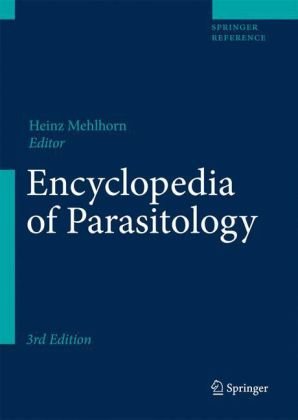
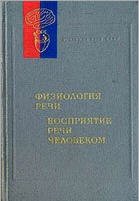
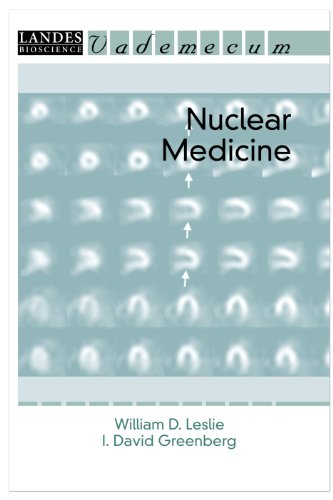
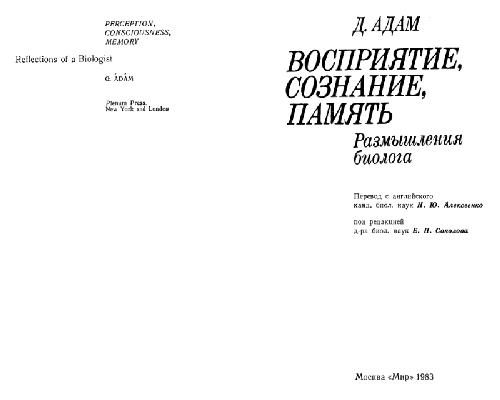

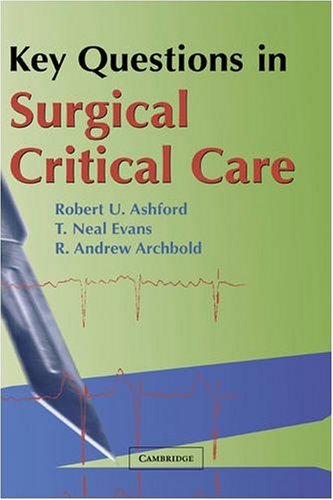

Reviews
There are no reviews yet.